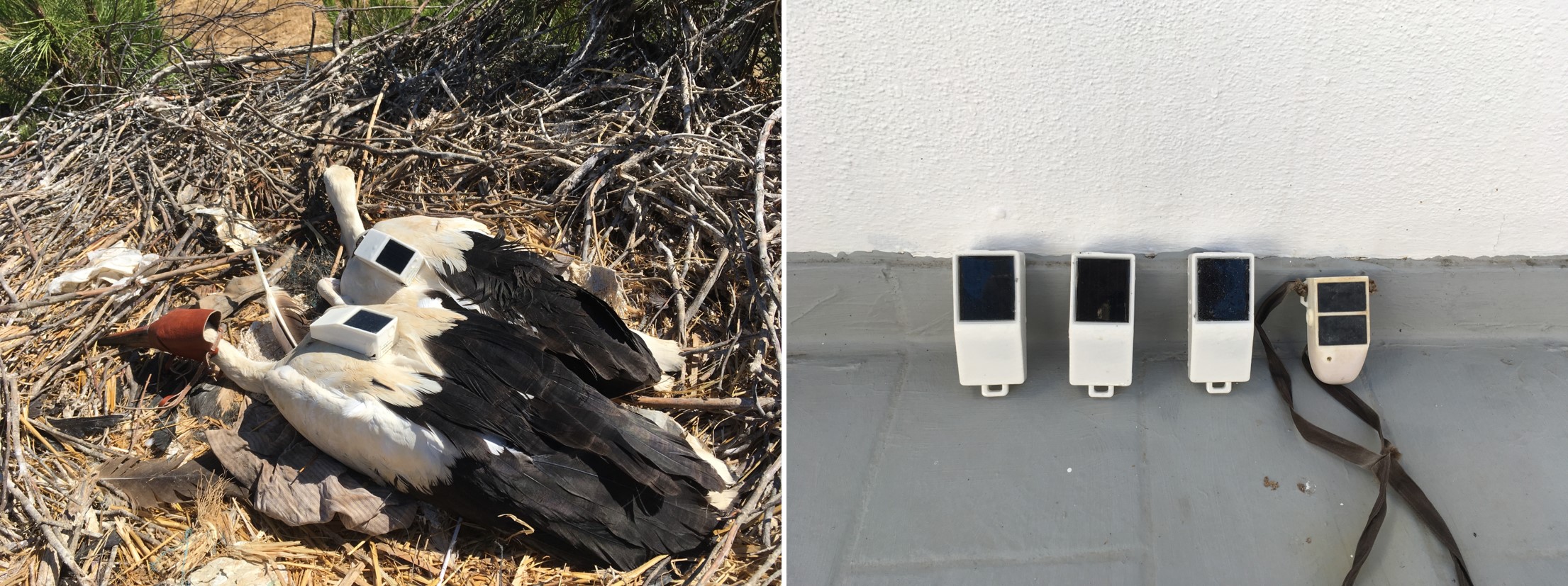OUR RESEARCH
Our research team specialises on the ecology, behaviour and conservation of storks.
The establishment of non-migratory populations in previously wholly migratory white and black storks presents a great opportunity to identify the mechanisms through which complex and highly evolved behaviours can adapt to changing environmental conditions and to explore the consequences of these changes for migratory populations.
Migration and movement ecology
The decision to migrate to a geographically disjunct non-breeding area or to remain resident on a breeding site year-round is likely to affect individual fitness. Long distance migrants may incur higher costs than residents ( or short distance migrants ) in terms of time and energy du-ring migratory flights, increasing the risk of mortality or delaying arrival in breeding areas. Yet, the costs of long-distance migration may be offset by benefits gained due to better external factors on the non-breeding range, such as improved foraging conditions, reduced metabolic costs or reduced winter mortality. Whilst few studies have quantified the consequences of partial migration, this knowledge is critical to predict whether populations of migratory birds will adapt to rapid environmental changes.
Genetics of partial migration
A combination of environmental and genetic factors is hypothesized to underlie partial migration. Although recent achievements in genomics will enable migratory genetics research from a phenotypic to a molecular approach, causative associations between genotype and phenotype for migratory traits are lacking. How quickly changes from migrancy to residency could occur in the wild would depend not only on the initial level of genetic variation in the behaviour of the population and on the strength of the selection pressure but also on generation times (or longevities) and on whether migratory and resident individuals mate assortatively. Moreover, a better understanding of how social factors influence movement and dispersal of migratory species is also of highest importance for disentangling the relative contributions of genes and culture.
Health status and human-wildlife conflicts
White storks hugely rely on predictable anthropogenic food subsidies (PAFS), such as landfill and rubbish dumps. Shared transmissible infectious pathogens, especially bacteria carrying antibiotic resistance mechanisms acquired through exploitation of PAFS, can have detrimental impacts on white storks but also on humans and domestic animals. Pathogen spread may be facilitated by long-range movements of migratory hosts and resident and migratory birds feeding together. Zoonotic pathogens with potential severe consequences for human health include avian influenza virus (AIV), West Nile Virus (WNV) and Borrelia and bacteria carrying antibiotic resistant mechanisms. Whilst pathogen detection is generally focused on known threats, the potential exposure of white storks feeding on PAFS to recently emerging transmissible pathogens (e.g. Acinetobacter baumanni, Candida auris) is unknown.
Impact of linear infrastructures
Collision and electrocution constitute one main cause on non-natural mortality amongst storks, both in their breeding and non-breeding areas and along the migratory routes. Besides that, the increasing use of power lines for nesting raises concern for the potential consequences of this behaviour at a population level. It is critical to understand what factors expose the birds to higher risk of mortality and how we can address these problems to reduce the threat from hazardous utility structures.
The iconic White stork is a very adaptable, opportunistic species and since the mid-1980s, increasing numbers of individuals have chosen to stay in Iberia all year rather than migrate to Africa in winter. This resident birds rely almost exclusively on the guaranteed, abundant food supply from landfills and benefit from milder European winter temperatures. Consequently, the number of wintering storks in Portugal has increased significantly from approximately 1.180 individuals in 1995 to over 14.435 in 2015.

In this sense, White stork is a good study species because they are a long-lived, extremely adaptable, opportunistic species that experiences variation in environmental conditions through their lives. The particular observed changes in their migratory behaviour provide an opportunity to identify the mechanisms through which complex and highly evolved behaviours can adapt to changing environmental conditions and to explore the consequences of these changes for migratory populations.
Besides that, this species was actually crucial in understanding the phenomenon of bird migration. Before migration was understood, people had no explanation for the sudden annual disappearance of birds like the White stork and barn swallow. Some theories of the time held that they turned into mice, or hibernated at the bottom of the sea during the winter, and such theories were even propagated by zoologists of the time. The appearence of the first and famous “Arrow stork” (“Pfeilstorch”, German term), which contributed greatly to understand the bird migration phenomenon, was a White stork found in 1822 near the German villa of Klutz, carrying an arrow from central Africa in its neck. This stork, in particular, proved that birds migrate long distances to wintering grounds. The term “Arrow stork” (Pfeilstorch”), is now given to all storks injured by an arrow while wintering in Africa, before returning to Europe, with an arrow stuck in their bodies. To date, around 25 “Arrow storks” have been documented.
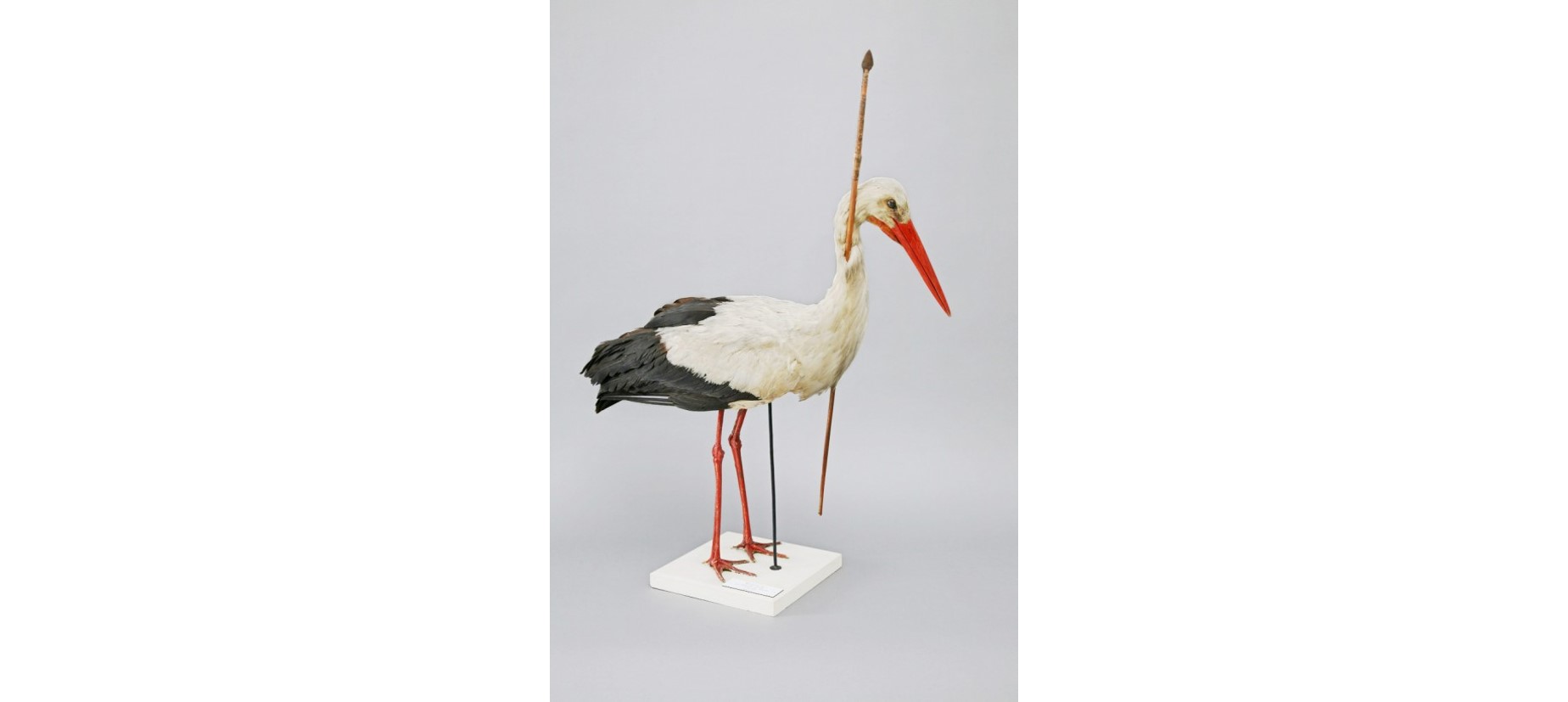
Unlike the closely related White stork, the Black stork is a shy and wary species that inhabits old, undisturbed, open forests which are close to water and the main diet includes mainly fish and amphibians.
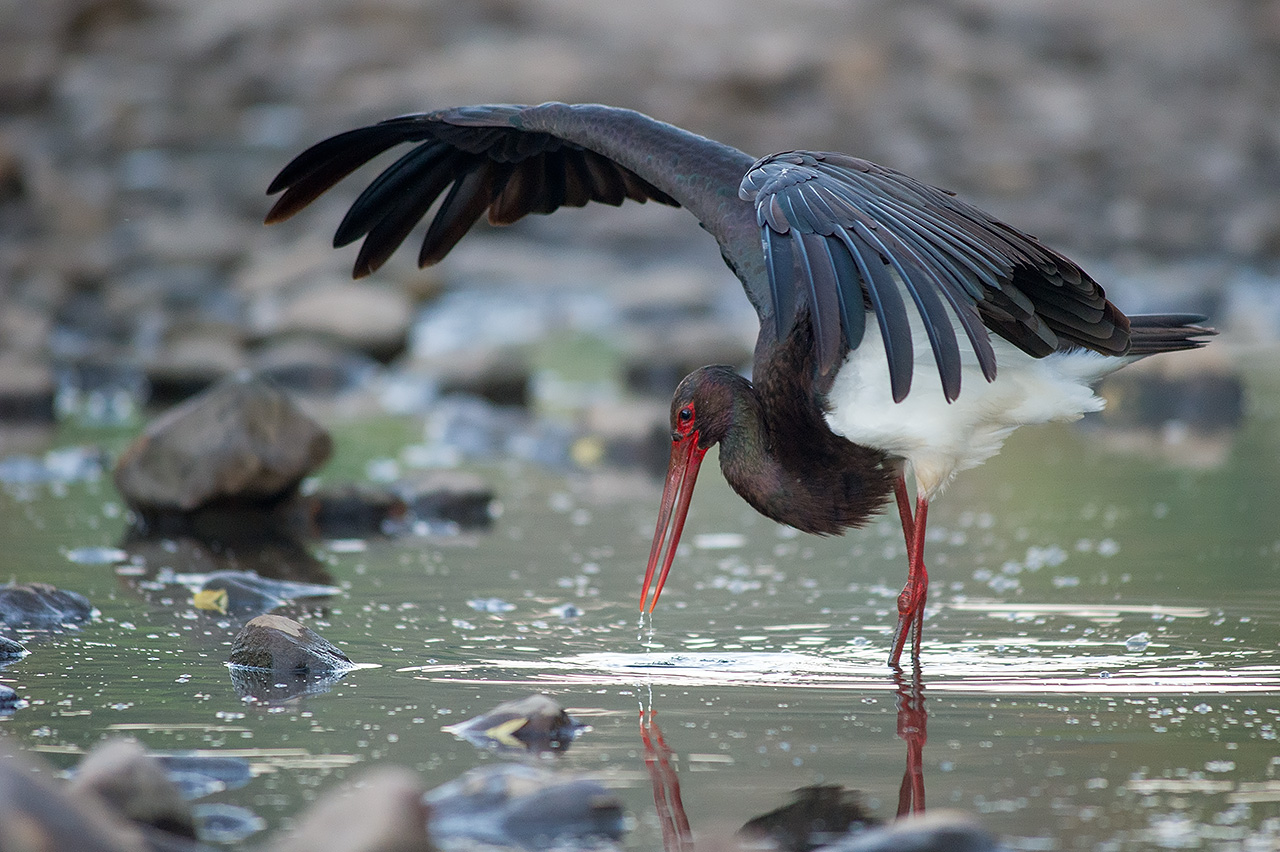
However like the White stork it is also a good study species since they are a long-lived species as well that experiences environmental variation through their lives and a long-distance migrant, with European populations wintering in tropical Sub-Saharan Africa, but from which increasing numbers of individuals are choosing to stay in Iberia instead migrate to Africa in winter.
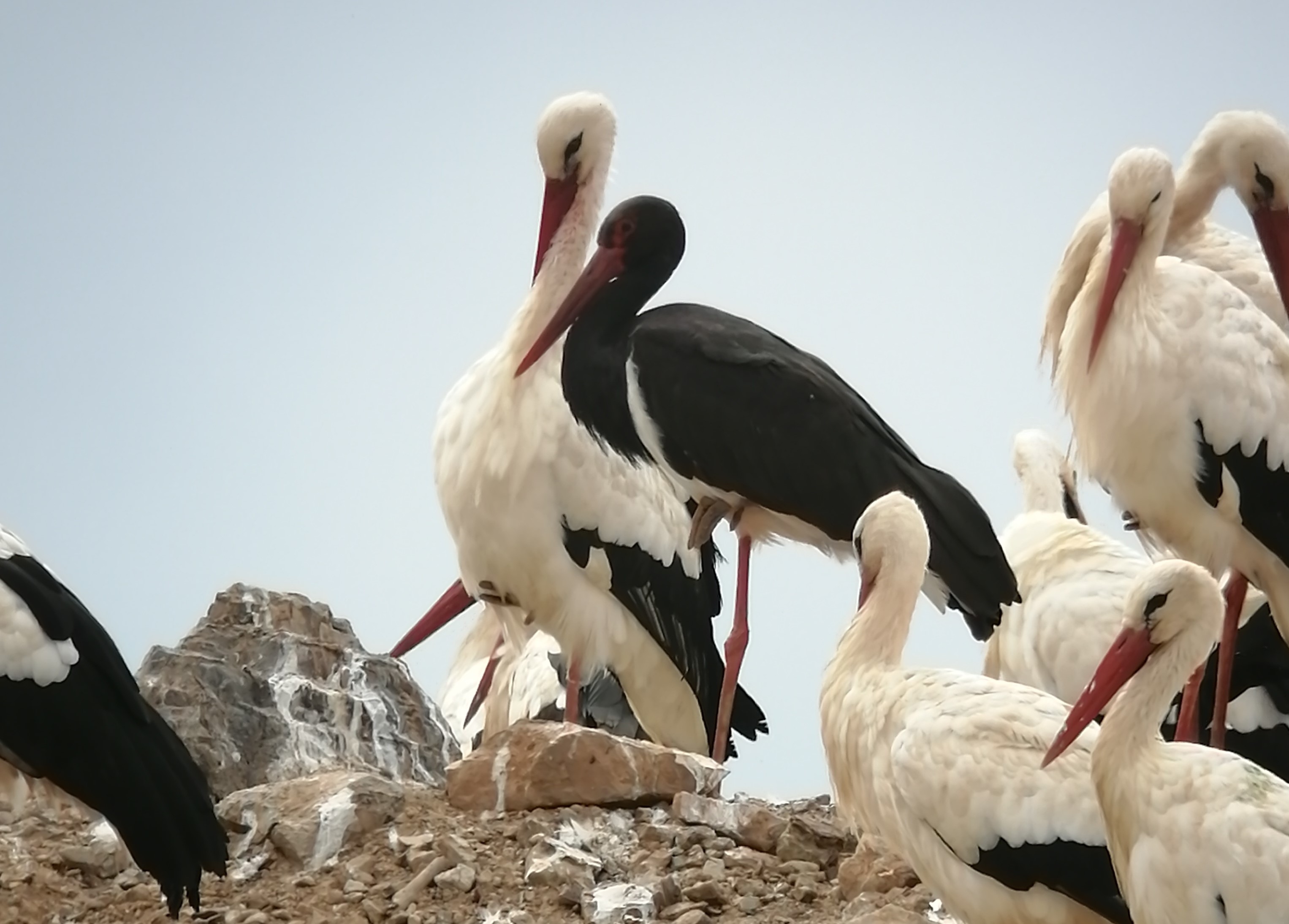
Recent advances in technology have allowed a detailed view of individual bird movement, improving our understanding on the behavioural and environmental factors driving the year-round movement of storks, and unveil the fitness consequences of different movement strategies.
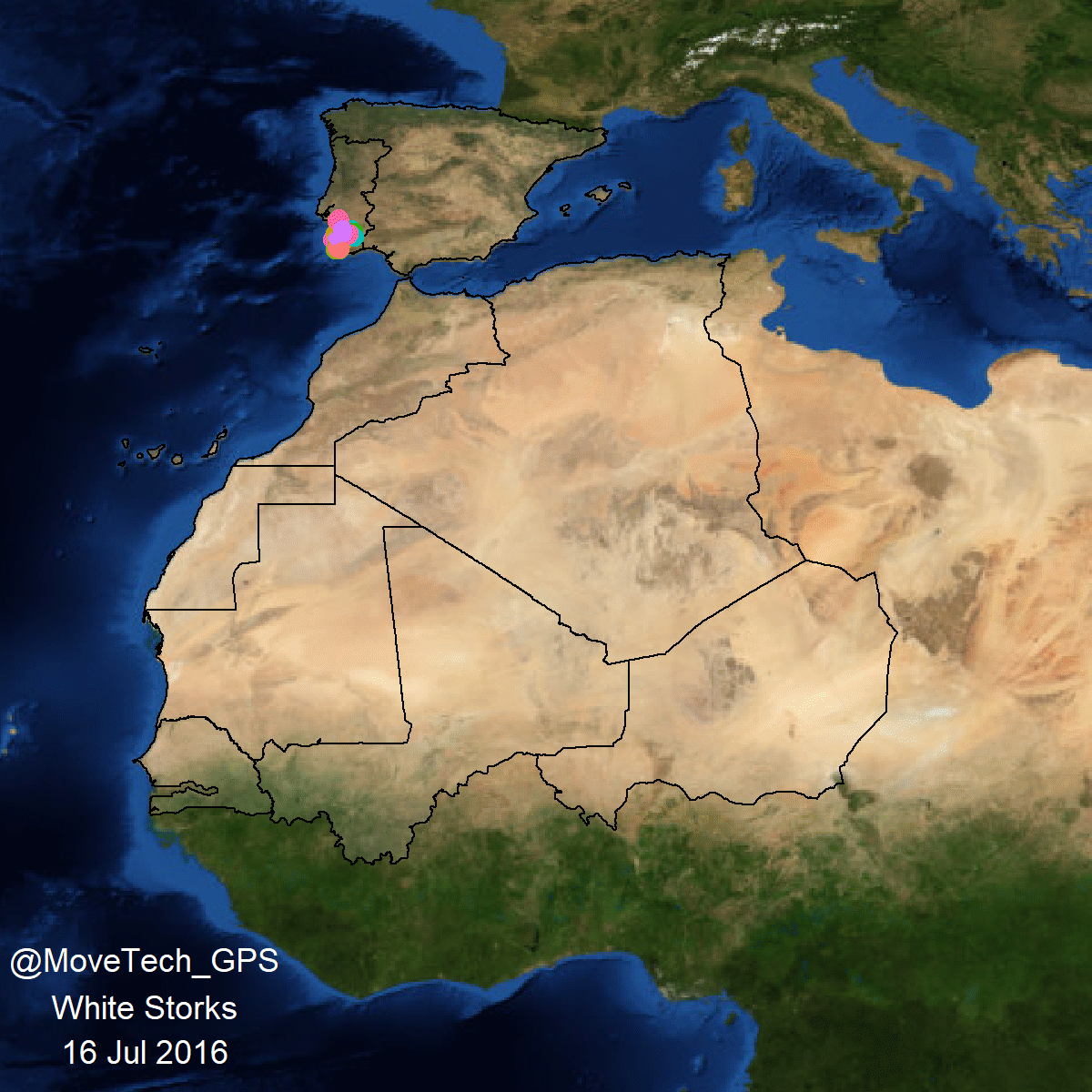
We trap storks in Portugal to deploy solar GPS/GSM loggers. The devices are programmed to log GPS positions together with 3D-accelerometer data and remotely transmit the information using the mobile phone network GPRS. The GPS positions, combined with the acceleration data, allow the monitoring of behaviour and activity-related energy expenditure of storks almost continuously. Overall, our logger data will enable us to perform comparisons between movement patterns, behaviour and activity-related energetic costs of storks with different migratory strategies (e.g. wintering in Africa or Europe), foraging preferences and relate it with individual fitness.
The solar GPS/GSM loggers used are mainly Movetech telemetry devices and some Ornitella devices.
